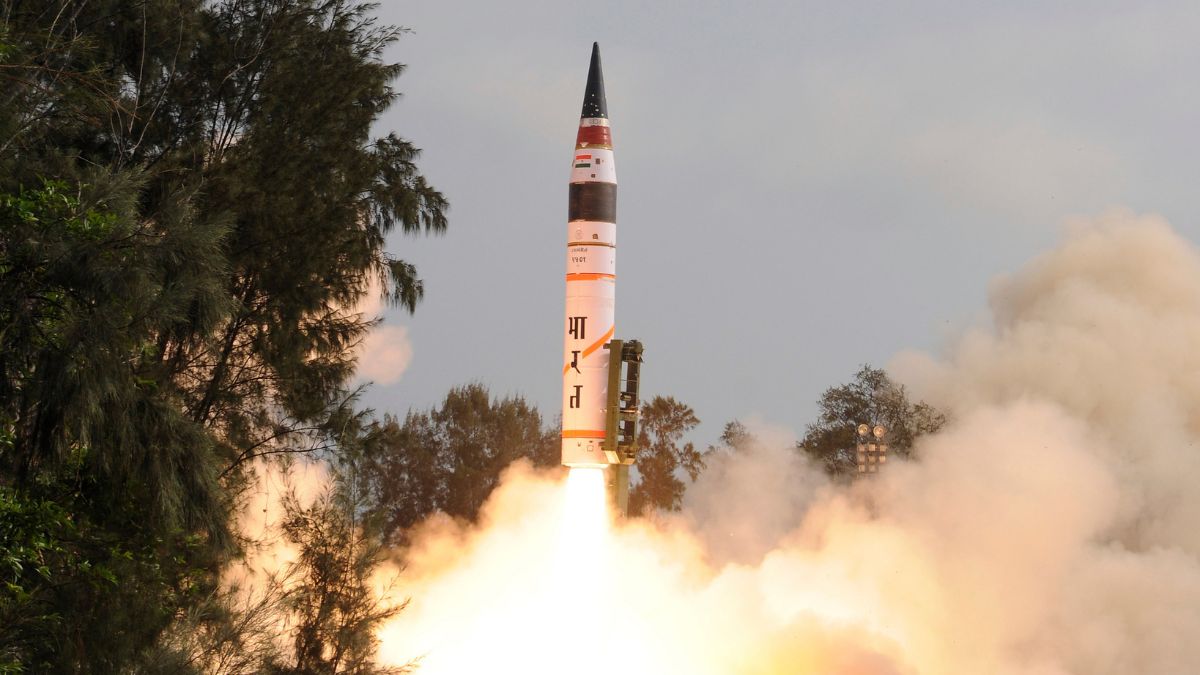Pakistan’s Prime Minister Shehbaz Sharif repotedly called a meeting of the National Command Authority , the apex body overseeing the nation’s nuclear arsenal on Saturday (May 10, 2025), a meeting which Pakistan Defence Minister Khawaja Asif has now claimed never happened .
The standoff, now in its fourth consecutive day, intensified as Pakistan launched drone and missile attacks targeting 26 sites across India under the cover of darkness on May 9 .
In retaliation, India struck back, with Islamabad reporting attacks on three of its airbases: Nur Khan, Mureed and Shorkot.
Pakistan’s use of its nuclear arsenal as a tool of deterrence has been a recurring theme, with Pakistani politicians invoking nuclear threats amid the ongoing conflict.
Meanwhile, we do a comparative analysis of India and Pakistan’s nuclear capabilities and doctrines:
The India-Pakistan rivalry dates back to the partition of British India in 1947, leading to multiple wars and ongoing disputes.
Both nations have since developed nuclear capabilities, with India conducting its first nuclear test in 1974 and Pakistan following in 1998.
What is India’s nuclear policy compared to Pakistan’s
India adheres to a “No First Use” (NFU) policy, asserting that it would not be the first to initiate a nuclear strike but would respond with punitive retaliation if attacked.
This doctrine puts an emphasis on credible minimum deterrence and aims to maintain a posture of restraint.
India’s nuclear command structure is under civilian control, with the Nuclear Command Authority overseeing strategic decisions.
Pakistan, on the other hand, has not adopted an NFU policy. Its doctrine is based on “Full Spectrum Deterrence,” which includes the potential use of tactical nuclear weapons to counter conventional military threats.
This approach is designed to deter India’s conventional military superiority and rapid mobilisation strategies, such as the “Cold Start” doctrine. Pakistan’s nuclear command is similarly under civilian oversight, with the National Command Authority responsible for strategic control.
How many nuclear warheads do India and Pakistan have
According to the Federation of American Scientists (FAS), India has upwards of 180 nuclear warheads as of 2025.
India has developed a nuclear triad consisting of land-based ballistic missiles (for example - Agni series ), air-delivered weapons and sea-based platforms, including nuclear-powered submarines equipped with ballistic missiles (SSBNs).
Pakistan has upwards of 170 nuclear warheads as of 2025, according to FAS.
Pakistan’s delivery mechanisms include land-based ballistic missiles (for example - Shaheen and Ghauri series), air-delivered weapons and cruise missiles. While Pakistan is developing sea-based capabilities, its nuclear triad is not yet fully realised.
How India became nuclear-capable
India’s nuclear journey began in earnest after China’s first nuclear test in 1964, which heightened New Delhi’s security concerns. India conducted its first nuclear test on May 18, 1974 at Pokhran in Rajasthan, code-named “Smiling Buddha.”
Though described as a “peaceful nuclear explosion,” it signalled India’s entry into the nuclear club.
India’s strategic posture remained ambiguous until 1998, when it conducted five underground nuclear tests as part of “Operation Shakti.” These tests demonstrated a range of nuclear capabilities, including thermonuclear devices.
In the aftermath, India formally declared itself a nuclear-armed state and adopted a policy of “No First Use” and credible minimum deterrence, maintaining civilian control over its nuclear arsenal under the Nuclear Command Authority.
How Pakistan became nuclear-capable
Pakistan’s pursuit of nuclear weapons was driven primarily by its security rivalry with India, especially after India’s first nuclear test in 1974.
Under the leadership of then-Prime Minister Zulfikar Ali Bhutto, Pakistan accelerated its nuclear programme, initiating clandestine efforts to acquire the technology and expertise necessary for weapons development.
Key figures like Dr. Abdul Qadeer Khan played a pivotal role by bringing uranium enrichment technology to Pakistan. Despite global scrutiny and proliferation concerns, Pakistan maintained a covert nuclear programme for decades.
On 28 May 1998, in response to India’s Pokhran-II tests , Pakistan conducted its own nuclear tests in the Chagai Hills, Balochistan, officially becoming the world’s seventh nuclear power.
These tests demonstrated a range of nuclear devices and underscored Pakistan’s intent to maintain strategic parity with India through a doctrine of credible deterrence .
Diplomatic efforts by India & Pakistan in the past
Despite their adversarial relationship, India and Pakistan have engaged in various confidence-building measures to mitigate the risk of nuclear conflict:
Non-Nuclear Aggression Agreement (1988): Both countries agreed not to attack each other’s nuclear facilities and have since reportedly exchanged lists of such installations annually.
Lahore Declaration (1999): This agreement aimed to reduce the risk of accidental or unauthorized use of nuclear weapons and to promote mutual understanding of each other’s security concerns.
Also Watch:
With inputs from agencies
Inhaling global affairs on a daily basis, Anmol likes to cover stories that intrigue him, especially around history, climate change, polo and even the politically-charged election cycles around the world. He has far too many disparate interests with a constant itch for travel. You can follow him on X (_anmol_singla) & please feel free to reach out to him at anmol.singla@nw18.com for tips, feedback and travel recommendations.
)